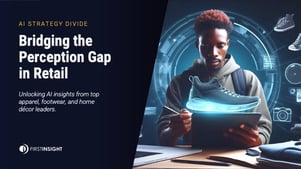 |
Representations of high school in movies always include the classic juxtaposition of the nerdy kids, decked out with their favorite gadgets, and the jocks who did their best to hide those other kids and their toys inside a gym locker.
Pop culture-driven stereotypes notwithstanding, high-tech and athletics do seem to make odd bedfellows at first blush. But as technology makes its way into just about every part of our lives, we're starting to see where the two converge, and that intersection may be what drives the future of both sports and technology.
The U.S. market for activewear is booming
A recent study done by the NPD Group found that activewear sales in the U.S. accounted for $33.7 billion, or 16 percent of the overall $206.3 billion apparel market between July 2013 and June 2014. NPD predicts the global market for activewear will grow to $178 billion by 2019.
"Activewear is booming, with sales growth exceeding that of the apparel market as a whole, and it's because consumers are wearing activewear not only to the gym, in the gym, and from the gym, but they are working out, going out, and even hanging out in activewear. Consumers are drawn to its comfort and versatility, and the fact that it still makes a fashion statement. Activewear, by nature, also evokes a sense of athleticism and well being, which only adds to its appeal," said Marshal Cohen, chief industry analyst at the NPD Group.
Cohen added that it won't be enough for retailers in this space to try to get by with the bare minimum in terms of product functionality and design. Consumer tastes are evolving as fast as the market is growing, and that means designers and retailers need to stay one step ahead of their customers by anticipating their needs if they want to remain competitive.
Tech and cutting-edge design find their place in the gym
When it comes to pushing the envelope in materials science and tech integration in the sports apparel vertical, activewear designers and manufacturers are just as driven and competitive as their customers. Product features that were once considered industry-leading, like odor-killing fabrics, insulating winter wear and data-collecting, activity-tracking wearables, are quickly becoming standard requirements for the customer base.
ABC News recently highlighted some of the products that are giving customers exactly what they're looking for in a piece of activewear. For example, the Lululemon Swiftly T-shirt is made of a silverescent fabric that inhibits odor-causing bacteria from growing - perfect for those who want to wear the shirt from the gym to a social outing. Or take the Athos Capris, which have built-in sensors that track fitness and health data and sends it to the wearer's smartphone, a feature that ties the fitness and "quantified self" movements together in one package.
What wearables really need to keep customers coming back for more
Wearable technology may be the most interesting sub-trend within the broader trend of growing interest in fitness and activewear, because it could end up being what makes or breaks the category in terms of its ability to reach its potential market value.
The pitfall that tripped up early entrants to the market was the overemphasis on the product and not enough attentiveness to the customers' needs. Slick user interfaces and interesting data points may win accolades at trade shows and get the attention of the press, but they don't necessarily solve a problem that real consumers have - namely, improving their health and lives.
"Most of these efforts lack data that is actionable; and very few of the products that came out this past year offer the 'guided experience' needed to actually help a user understand what to do with all the data," Jason Fass, Zepp Labs' Chief Executive Officer, said in an interview with SportTechie.
Simply gathering data and presenting it nicely is important, but it isn't likely to keep people coming back for more. As SportTechie wrote, people want to know what they can do with that data. Thus, wearables manufacturers need to figure out how to go beyond the flashy and sexy and get to the real, actionable insights - the stuff that really helps people change their habits, make good choices and improve their lives overall - if they want to have the staying power necessary to become a long-lived product category.















